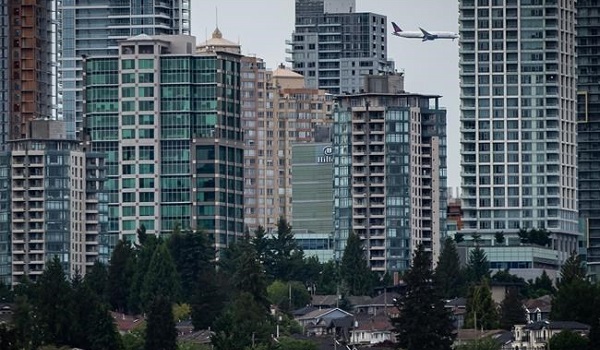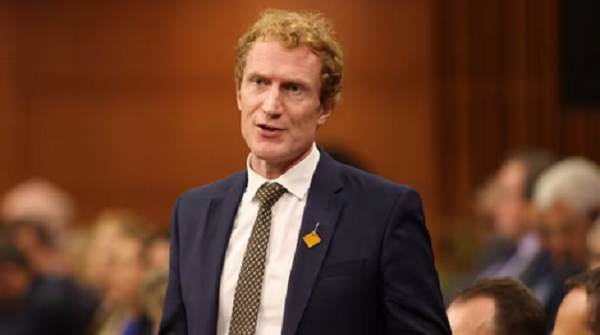A breakdown of costs that make up the price of a new Toronto condo
Is a condo in Toronto really worth the million-dollar price tag?
Despite sales in Toronto’s new-home market dropping to record lows, prices are holding relatively firm — the benchmark price of a new condo was about $1.210 million in June, according to data from Altus Group for the Building Industry and Land Development Association (BILD) — and developers say rising building costs and government fees are to blame.
In July, a coalition of Ontario developers wrote an open letter to the Toronto, Ontario and federal governments, asking for tax breaks on all new builds and for development charges to be reduced to their 2009 rate, adjusted for inflation. The Coalition Against New-Home Taxes, which included 19 developers, said they would pass the savings to homebuyers, dollar for dollar, and would be open to accountability measures to ensure they are doing so.
But is that the only place developers could pinch to bring down the cost of a Toronto condo?
The Star spoke to developers and consulted studies to break down where the condo money goes. Overall, condo prices include land costs; “hard” construction costs such as labour and materials; “soft” construction costs such as architects’ and lawyers’ fees; government charges; and developer profits.


Developer profits
Developers aim to profit 15 per cent of the sale price of a new condo, but margins can range from 12 to 17 per cent, said Matt Young, president and CEO of Republic Developments. That means a builder would aim to profit $181,500 for a new unit that sells at Toronto’s average of $1.210 million.
“It largely depends on the size and timeline of the project,” said Young, who is part of the developer coalition, in an email to the Star. “Longer timeline projects need higher margins … to ensure it meets an appropriate return threshold for the partners who invested their equity for a longer period of time.”
It’s also possible that a project gets “hit with cost overruns” leading to a single-digit margin or even a loss, Young said.
Dave Wilkes, president of BILD, said projects traditionally need 8 to 10 per cent profitability in order to be viable with investors in the project.
Estimates for profits vary; a 2022 report by the Canada Mortgage and Housing Corp. (CMHC) that analyzed developments in Toronto, Vancouver and Montreal found developers typically plan to profit 10 to 15 per cent.
Land costs
Land prices differ depending on “market factors,” such as location, size and timing of the purchase, Wilkes said, noting that any condo near completion is on land that was purchased years ago.
Wilkes said prices vary too much to give an average, but Young said land can account for as much as 10 per cent of developers’ input costs in a more expensive area of the city, or as low as four per cent in a less expensive area.
On average, he estimated land costs in Toronto make up 7.5 per cent of builders’ expenses. That would be 6.375 per cent of the sale price if the developer makes a 15 per cent profit, or about $77,138 of the cost of a $1.210 million condo.
‘Hard’ construction costs
Developers must also account for hard costs, which include building materials, equipment and labour. These expenses typically make up 40 to 45 per cent of builders’ input costs, depending on the design, finishes and products used, Young said.
That would be about 34 to 38 per cent of the total sale price, if developers profit 15 per cent; between $411,400 and $459,800 for a $1.210-million condo.
For midrise buildings, hard costs are about $280 to $400 per square foot, and for highrise buildings, they can be from $365 to $500 per square foot, Wilkes said.
If the building has underground parking, costs would rise by $175 to $300 per square foot, he said, with midrises likely to be on the lower end and highrises likely to be on the higher end.
‘Soft’ construction costs excluding government fees
Soft costs include fees paid to architects, engineers, lawyers and other professionals. They also cover marketing, project management, interest and contingency costs. According to Young, these payments make up about 22 per cent of input costs.
Out of the total sale price, that would be about 18.7 per cent, or $226,270 of $1.210 million.
Government charges
When building a condo, developers must pay government fees, which include development charges, density payments and permit fees, plus taxes. Altogether, they add up to 27 per cent of input costs, Young said, which would be 22.95 per cent of the total sale price if the developer profits 15 per cent. For a $1.210-million condo, that would be about $277,695.
The developer coalition said development charges, in particular, have increased dramatically in the last 15 years. They account for 9.7 per cent of input costs, Young said, which would be 8.2 per cent of the total sale price.
According to the city, development charges help pay for infrastructure needed for new developments, such as roads, transit, water and sewer infrastructure, community centres and fire and police facilities. They’re calculated based on the number and type of proposed units.
If builders didn’t have to pay permit fees, municipal fees, guarantee fees, development charges or density payments, input costs for highrise condos in Toronto could decrease by about 15 per cent, the 2022 CMHC report found. (The study analyzed a scenario for a highrise with 24 storeys, 200 units, and an average unit size of 650 square feet.)
Developers must also pay HST when a buyer intends to use the home as their primary residence (whereas investors pay their own taxes) but partial rebates exist.
“HST is typically built into the sale price of a new condo, and includes whatever HST rebate is available,” a spokesperson for BILD said. “The buyer would be incurring the cost of the full amount of the HST directly (minus the provincial rebate) — not as an additional fee at closing but at the beginning as part of the sale price and only receiving a rebate on the provincial portion of the HST.”
For the provincial portion, homebuyers can retain 75 per cent of the tax, up to $24,000. The federal rebate of 36 per cent is only available for homes costing less than $350,000, with smaller savings available for homes costing up to $450,000.
But those prices are “impossible to find in the GTA,” said Wilkes.
So where can condo costs be cut?
To reduce the price of condos in the private market, one urban planner suggested development charges be moderated, and said in the public sector, governments can lease public land to non-profits that would provide affordable housing, thus cutting down on their land costs.
David Amborski, a professor at Toronto Metropolitan University’s School of Urban and Regional Planning and the founding director of the university’s Centre for Urban Research and Land Development, explained that municipalities increase development charges each year to correlate with the Building Construction Price Index. Although the rates made sense when the Development Charges Act was introduced in the 1990s, he said they now “far exceed” the rate of inflation.
“That’s been very punitive for developers,” he said, adding that the provincial Housing Affordability Task Force, which he was a part of, agreed in 2022 that the charges needed to change.
The city, meanwhile, said development charges are essential to maintaining the city’s growth, and losing them would mean higher property taxes or user fees, or declining services.
“This funding is critical to ensure that growth is managed in a fiscally sustainable way, and that the city can provide complete communities, with services, transportation connectivity, and other infrastructure, as the city continues to grow,” a spokesperson said in a statement.
While the coalition of developers called on the provincial and federal governments to slash HST, as policymakers have done for rental housing, Wilkes said the threshold for rebates should increase and be indexed to housing prices, a recommendation supported by the Housing Affordability Task Force’s 2022 report.
“When the HST was introduced on new homes in 1991, there was a promise to index that every two years to reflect the impact that inflation was having on the rebuild levels,” he said. “One way to address the cost of a new home is fulfilling the commitment.”
Amborski said governments could also lease land, rather than sell it, to non-profits that would provide some affordable housing. Some examples of this are in Regent Park and the West Don Lands, he said, although the building process would likely be slow and results would take years, he explained.
This article was first reported Star











